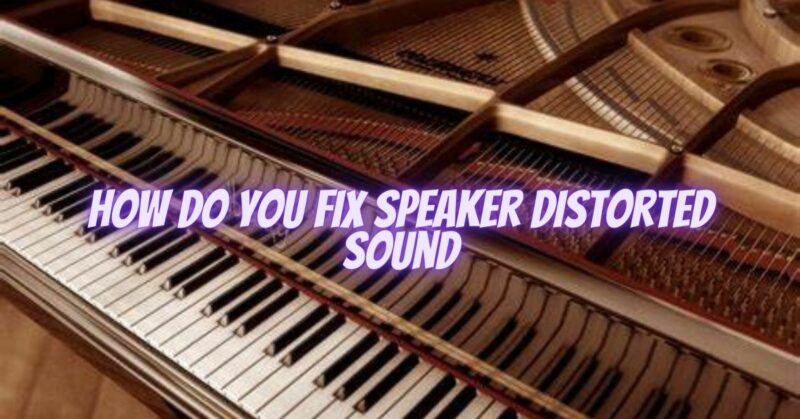Distorted sound from speakers can be frustrating and impact your listening experience. Fortunately, there are several troubleshooting steps you can take to identify and resolve the issue. In this article, we will explore practical solutions to fix distorted sound from speakers and restore audio clarity.
- Check Audio Sources and Connections:
a. Verify the audio source: Ensure that the audio file or source you are playing is of high quality and not itself distorted or corrupted. Test different audio sources to rule out issues with specific files or sources.
b. Inspect cables and connections: Check all audio cables, including speaker cables and interconnects, for loose connections, damage, or frayed wires. Reconnect or replace faulty cables as necessary.
- Adjust Volume Levels and EQ Settings:
a. Lower volume levels: Excessive volume can cause distortion, particularly if the speakers are pushed beyond their power handling capabilities. Reduce the volume to a comfortable level and see if the distortion diminishes.
b. Reset EQ settings: Equalizer (EQ) settings can introduce distortion if improperly adjusted. Reset EQ settings to flat or default, then gradually make subtle adjustments to find a balanced sound.
- Address Speaker Placement and Acoustic Issues:
a. Re-position speakers: Improper speaker placement near walls, corners, or other reflective surfaces can cause distortion. Experiment with speaker placement to minimize reflections and optimize sound reproduction.
b. Consider room treatment: Acoustic treatments, such as absorption panels or diffusers, can help control unwanted reflections and resonances that contribute to distortion. Evaluate the room’s acoustics and consider appropriate treatments.
- Check Amplifier and Receiver Settings:
a. Verify amplifier settings: Review amplifier settings, such as gain, balance, and tone controls. Ensure that settings are appropriately adjusted for your speakers and audio preferences.
b. Test different inputs: If using multiple inputs, such as auxiliary, HDMI, or Bluetooth, try switching between them to determine if the distortion is specific to a particular input.
- Update Drivers and Firmware:
a. Speaker firmware: Some powered speakers or wireless systems have firmware that can be updated. Check the manufacturer’s website for any available firmware updates and follow the instructions to update your speakers if applicable.
b. Audio device drivers: Update the drivers for your audio device, such as sound card or USB DAC, to ensure compatibility and optimal performance.
- Consult Professional Help:
a. Speaker repair: If distortion persists despite troubleshooting, consider consulting a professional speaker repair service. They can diagnose and repair any hardware issues that may be causing the distortion.
b. Audio expert consultation: If you have tried various troubleshooting steps without success, seeking advice from an audio expert or technician may provide additional insights and guidance.
Conclusion:
Distorted sound from speakers can be resolved through systematic troubleshooting. By checking audio sources and connections, adjusting volume levels and EQ settings, addressing speaker placement and acoustic issues, verifying amplifier and receiver settings, updating firmware and drivers, and seeking professional help when needed, you can successfully resolve distorted sound issues and restore audio clarity. Remember to approach each step methodically and take note of any changes or improvements along the way. With patience and diligence, you can enjoy distortion-free sound and an enhanced audio experience.


